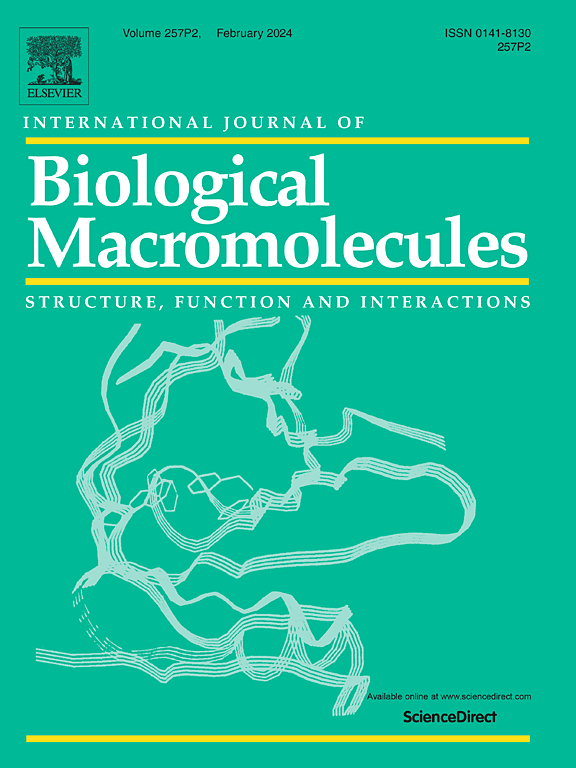Stable antimicrobial emulsion prepared with quaternary ammonium lignin and cinnamaldehyde used for effective postharvest mango preservation
IF 8.5
1区 化学
Q1 BIOCHEMISTRY & MOLECULAR BIOLOGY
International Journal of Biological Macromolecules
Pub Date : 2025-04-30
DOI:10.1016/j.ijbiomac.2025.143736
引用次数: 0
Abstract
With the life quality improving, people's demand for fresh mango is growing rapidly, causing a higher requirement for postharvest preservation. The objective of this study was to prepare a stable and multi-functional emulsion for postharvest mango preservation with cinnamaldehyde emulsified by amphipathic quaternary ammonium kraft lignin, with an excellent dispersion performance. After vacuum freeze-drying and redissolving, no demulsification occurred of the emulsion after heating at 90 °C, the addition of NaCl, 4 cycles of freeze-thaw and 14 days of storage, while the particle size of the emulsion maintained stably in different pH conditions. The DPPH and ABTS free radical scavenging rate were 26.27 % and 95.84 %, respectively. The emulsion presented an excellent antimicrobial ability with the change of the cell membrane permeability and death of bacteria, causing by cinnamaldehyde. The respiratory action, soluble solid and titrable acids consumption of mango coated by the emulsion were inhibited to a certain extent and the freshness life was extended. The emulsion presented no affect in the growth and reproduction of L929 cells with concentration below 50 μg/mL, meanwhile, the properties of emulsion redissolved were not influenced, achieving the goal of long-term storage and transportation, showing great application potential in postharvest mango preservation.

用季铵盐木质素和肉桂醛制备稳定的芒果采后保鲜抗菌乳
随着生活质量的提高,人们对新鲜芒果的需求迅速增长,对芒果的采后保鲜提出了更高的要求。以两亲性季铵硫酸盐木质素为乳化剂乳化肉桂醛,制备分散性良好的芒果采后保鲜乳液。经真空冷冻干燥再溶解后,90℃加热、加入NaCl、4次冻融、存放14 d均未发生破乳现象,且在不同pH条件下,乳状液的粒径保持稳定。DPPH和ABTS自由基清除率分别为26.27%和95.84%。乳状液对肉桂醛引起的细胞膜通透性和细菌死亡的改变表现出优异的抗菌能力。乳状液包被芒果后,可在一定程度上抑制芒果的呼吸作用、可溶性固形物和可滴定酸的消耗,延长芒果的保鲜寿命。当乳状液浓度低于50 μg/mL时,乳状液对L929细胞的生长和繁殖没有影响,同时乳状液的再溶性不受影响,达到了长期储存和运输的目的,在芒果采后保鲜方面具有很大的应用潜力。
本文章由计算机程序翻译,如有差异,请以英文原文为准。
求助全文
约1分钟内获得全文
求助全文
来源期刊
CiteScore
13.70
自引率
9.80%
发文量
2728
审稿时长
64 days
期刊介绍:
The International Journal of Biological Macromolecules is a well-established international journal dedicated to research on the chemical and biological aspects of natural macromolecules. Focusing on proteins, macromolecular carbohydrates, glycoproteins, proteoglycans, lignins, biological poly-acids, and nucleic acids, the journal presents the latest findings in molecular structure, properties, biological activities, interactions, modifications, and functional properties. Papers must offer new and novel insights, encompassing related model systems, structural conformational studies, theoretical developments, and analytical techniques. Each paper is required to primarily focus on at least one named biological macromolecule, reflected in the title, abstract, and text.

 求助内容:
求助内容: 应助结果提醒方式:
应助结果提醒方式:


